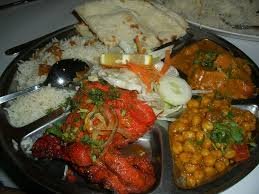
1. Khaja :

Khaja is a dessert of India. Refined wheat flour, sugar and oils are the chief ingredients of khaja. It is believed that, even 2000 years ago, Khajas were prepared in the southern side of the Gangetic Plains of Bihar. These areas which are home to khaja, once comprised the central part of Maurya and Gupta empires. Presently, Khajas are prepared and sold in the city of Patna, Gaya and several other places across the state of Bihar. Khajas of the Silao and Rajgir are known for their puffiness. Khajas have travelled to some other parts of India, including Andhra Pradesh and Odisha . Khaja of Kakinada is a coastal town of Andhra Pradesh. Where as khaja of Puri is too famous. At first, the butter is of wheat flour, mawa and oil. It is then deep fried until crisp. Then a sugar syrup is made which is known as Paga. The crisp croissants are then soaked in the sugar syrup until they absorb the sugar syrup. In Kakinada, Khaja is dry from outside and full of sugar syrup from inside and is juicy.
2. Murki :

Murki is a short taan or inverted mordent in Hindustani classical music, known as pratyahatam in Carnatic music. It is a fast and delicate ornamentation or alankar, employing two or more notes and is similar to a mordent or ulta murki. It is often delivered in rapidfire tempo, and is employed in thumris and other lighter genres. Other taans used in thumri gyaki include the khatka and the zamzama.
3. Saag :

Saag or sag is a leaf-based (spinach, mustard leaf, basella, etc.) dish eaten in South Asia with bread such as roti or naan, or rice (in Odisha and West Bengal). Saag can be made from spinach, mustard leaves, finely chopped broccoli, or other greens, along with added spices and sometimes other ingredients such as paneer. On some menus, it is called saagwala. Saag is more common in North Indian provinces of Haryana, Uttar Pradesh, as well as in the Pakistani and Indian region of Punjab, especially sarson da saag, where it may be eaten with makki ki roti. This roti is made of corn flour and is yellow in colour, though it can also be eaten with other breads. Saag/saj however can be a catch-all term for various green-leaved dishes. Saag aloo (spinach potato)
4. Chenopodium album :

Though cultivated in some regions, the plant is elsewhere considered a weed. Common names include lambs quarters, melde, goosefoot and fat-hen, though the latter two are also applied to other species of the genus Chenopodium, for which reason it is often distinguished as white goosefoot. It is sometimes also called pigweed However, Pigweed is also a name for a few weeds in the family: Amaranthaceae, The Name pigweed is used for Amaranthus albus, Redroot pigweed and others.Chenopodium album is extensively cultivated and consumed in Northern India as a food crop, and in English texts it may be called by its Hindi name bathua or bathuwa It is called Pappukura in Telugu, Paruppukkirai in Tamil, Kaduoma in Kannada, Vastuccira in Malayalam, and Chakvit in Konkani.
5. Bhurta :

Bhurta or bharta is a lightly fried mixture of mashed vegetables (chakata) in the cuisine of India, Bangladesh and Pakistan. An example of this is Baingan ka Bhurta.
6. Kheer :
Kheer is a South Asian rice pudding made by boiling rice, broken wheat, or vermicelli with milk and sugar; it is flavoured with cardamom, raisins, saffron, cashew nuts, pistachios or almonds. It is typically served during a meal or as a dessert.
7. Laddu :

Laddu or Laddoo is a ball-shaped sweet popular in Indian Subcontinent as well as regions with immigrants from the Subcontinent such as Hijaz. Laddu is made of flour and sugar with other ingredients that vary by recipe. It is often served at festive or religious occasions.

